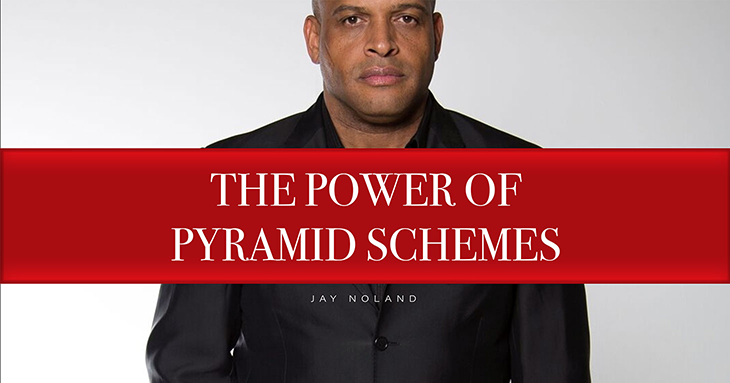
Court Rules that Success by Health Was a Pyramid Scheme
Court also finds that defendants made false and deceptive earnings claims.
Deconstructing Herbalife's defense that a survey found most people join for discounts.
| Bonnie Patten
In the recent Bostick v. Herbalife class-action case, which settled in California federal court in May, Herbalife’s primary defense as to why it isn’t a pyramid scheme was a static 2013 survey estimating that approximately 73% of its members joined the company to receive a wholesale price on products. In other words, Herbalife, a Los Angeles-based multi-level marketing company that is also under investigation by federal officials, believes it can shield itself from prosecution by claiming that a majority of people join only to receive lower prices on its dietary supplements and weight-loss products, not to earn money. The Bostick court opined that “this evidence seriously undermines Plaintiffs’ endless chain scheme claim, as it suggests most members did not join ‘for the chance to receive compensation’ for recruiting new members.” But here are five reasons why this defense simply won’t work.
1. Follow the money. Determining whether an Multilevel Marketing – a way of distributing products or services in which the distributors earn income from their own retail sales and from retail sales made by their direct and indirect recruits. is a pyramid scheme or not by analyzing people’s motivation for joining an organization is of little to no value. As Koscot, a cosmetics MLM that the FTC deemed an illegal “entrepreneurial chain” in one of its first pyramid scheme actions, and its progeny have made clear, the real issue is what the company motivates its distributors to do – that is, whether the company focuses on paying distributors for recruitment rather than retail sales. And this is not an analysis that can be isolated to one particular moment in time. Quite to the contrary, in determining whether or not an organization is operating a pyramid scheme, the data must be reviewed over time to see if there is a common pattern and practice of ongoing reward for recruitment with little evidence of sustained consumer demand. See Omnitrition, 79 F.3d at 782 (citing Koscot, 86 F.T.C. at 1181) (“The promise of lucrative rewards for recruiting others tends to induce participants to focus on the recruitment side of the business at the expense of their retail marketing efforts, making it unlikely that meaningful opportunities for retail sales will occur.”)
2. Totally irrelevant. Assuming Herbalife’s survey is accurate (which is a big assumption), it simply means that its business can be divided into two primary segments: its retail discount program and its distributor program. That 73% joined Herbalife at one moment in time for a retail discount doesn’t mean that the 27% engaged in direct sales for Herbalife are not involved in a pyramid scheme. And as Bostick made clear, those involved in the distributor program purchased a disproportionately larger amount of products than did the discount buyers. See FTC v. Burnlounge, Inc., 753 F.3d 878, at 881 (“The evidence at trial showed that BurnLounge’s business had two primary aspects – its Retailer program and its Mogul program. . . . The Mogul program was the only aspect of BurnLounge that the district court found to be a pyramid; accordingly, this opinion focuses on the Mogul program.”)
3. Prosecutors don’t care. There are two prongs to determining whether a company is operating a pyramid scheme: (1) the right to sell a product, and (2) the right to receive rewards, which are unrelated to sale of the product to the ultimate user, in return for recruiting other participants into the program. The primary reason why someone says they joined Herbalife is of little consequence in determining whether Herbalife’s focus is on recruitment with rewards rather than sales of merchandise. Which is to say that why someone joins a business doesn’t obviate the fact that the business may still be a fraud. (See Webster v. Omnitrition International, Inc., 79 F.3d 776, 782 (9th 1996) in which the court found that MLM Omnitrition was a pyramid scheme because “[t]he mere structure of the scheme suggests that Omnitrition’s focus was in promoting the program rather than selling the product.”)
4. Identity crisis. While Herbalife is a multi-level marketing company, for purposes of its pyramid scheme defense it relies on static survey evidence that 73% of its members actually consider it more of a buyers’ club (ala Costco). The argument goes like this: internal consumption by the majority of Herbalife members amounts to sales to the ultimate users so any rewards paid on these sales are related to the sales of products to ultimate users and have nothing to do with recruitment or illegal schemes or the like. But here’s the problem with this argument, there has been and always will be internal consumption in MLMs – it is a constant that can be wholly eliminated from determining if a company is a pyramid scheme because it does not (and never will) answer the question of how an MLM’s bonus structure operates in practice. Moreover, such static survey information fails to capture the true life cycle of these discount customers, who generally quickly become inactive and no longer make any purchases. (See FTC v. Burnlounge, Inc., 753 F.3d 878 at 887, which found that “[i]n practice, the rewards BurnLounge paid for package sales were not tied to the consumer demand for the merchandise in the packages; they were paid to Moguls for recruiting new participants. . . . Rewards for recruiting were ‘unrelated’ to sales to ultimate users because BurnLounge incentivized recruiting participants, not product sales.”)
5. Devil’s in the detail. The January 2013 distributor research survey that Herbalife holds up as its golden goose to defend itself against pyramid scheme allegations is largely a mystery as Herbalife keeps the document behind its corporate veil. And while it may not be worth the paper that it is written on, in the end it really doesn’t matter because it cannot prove that Herbalife is or is not a pyramid scheme.
Court also finds that defendants made false and deceptive earnings claims.
Declarations in court filing read more like a legislative manifesto than remedies that could appropriately be issued by a court.
A recap of TINA.org pressuring Nerium to #GetReal


